Hardwoods, Softwoods, and Exotic Lumber
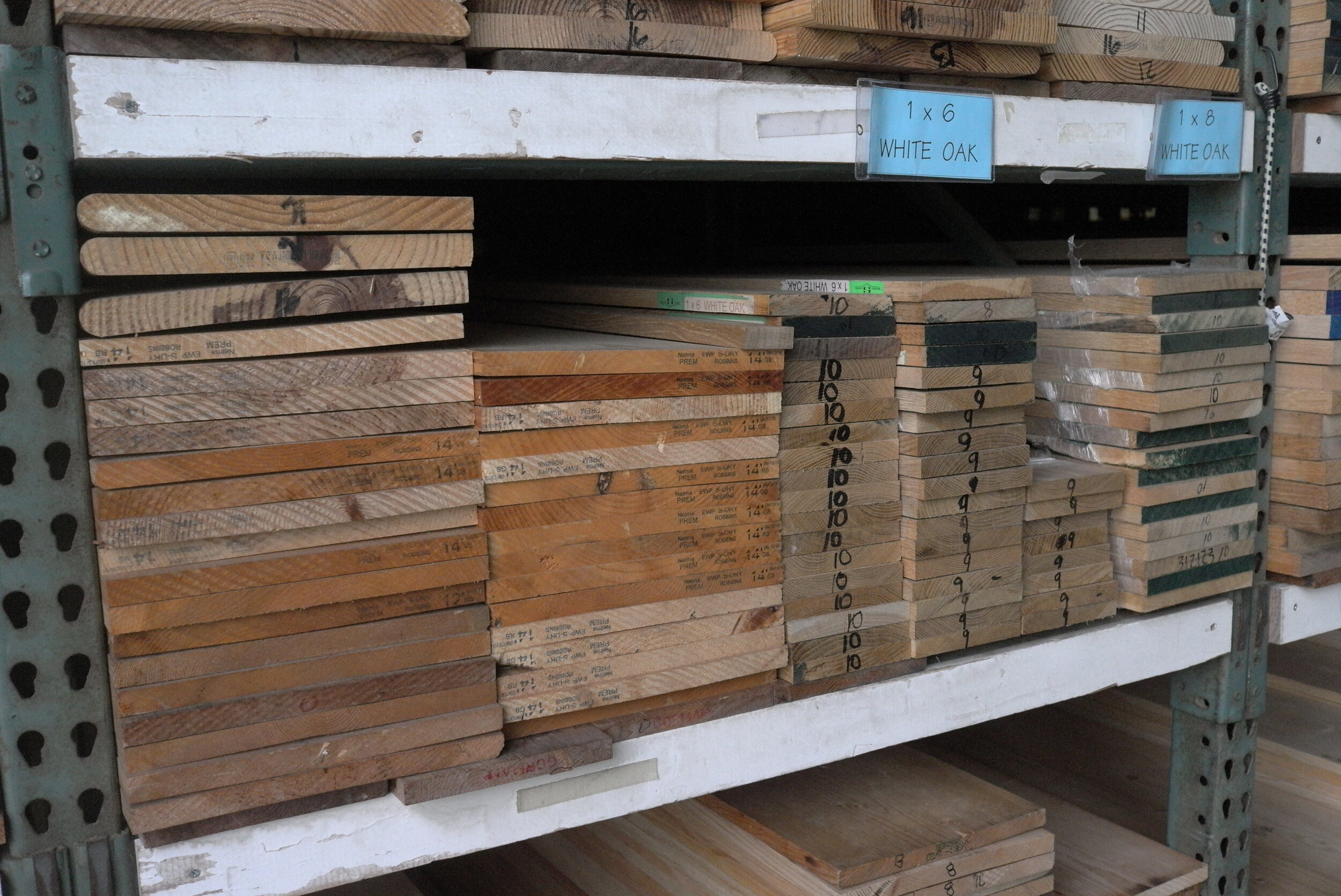
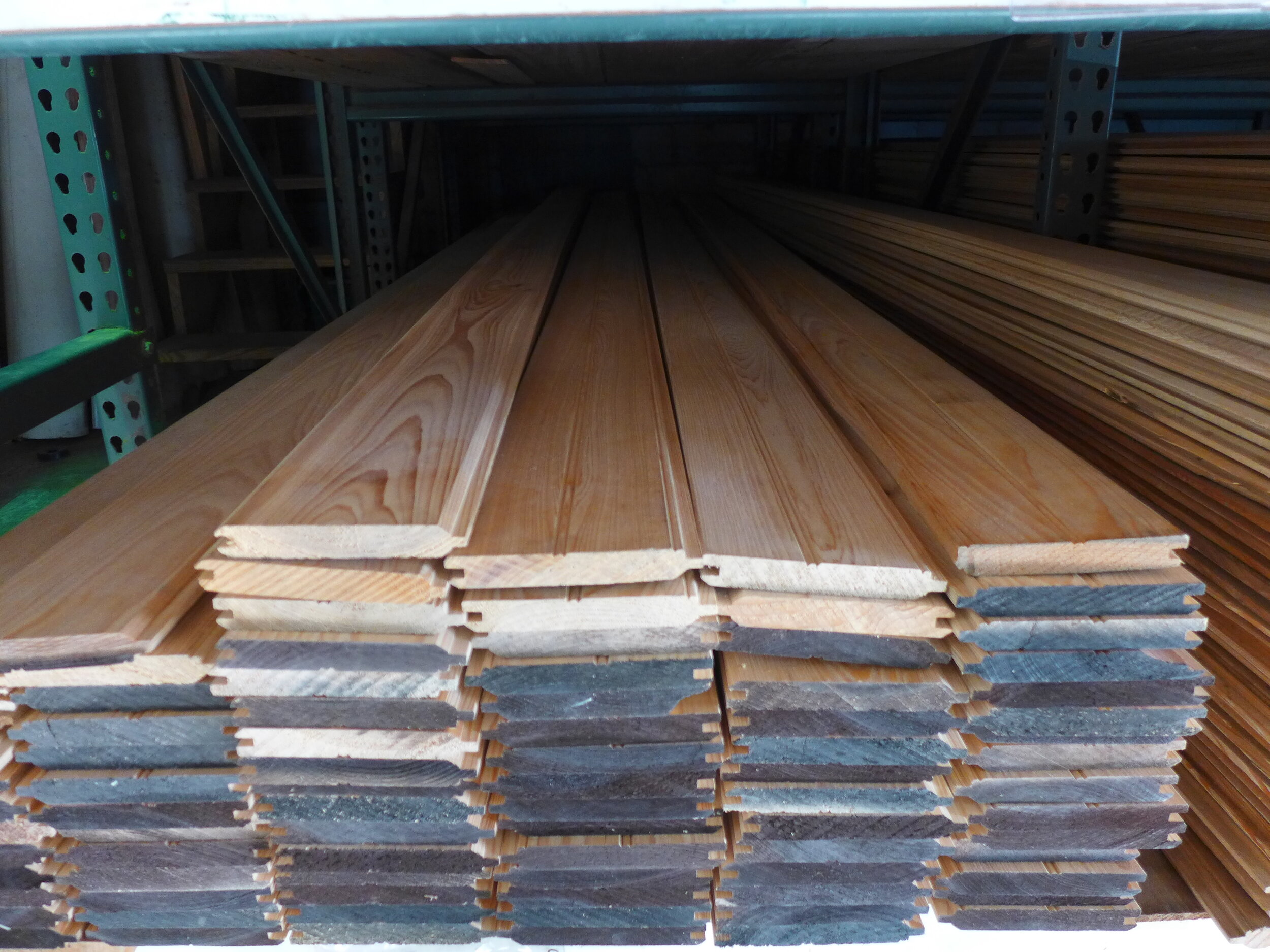
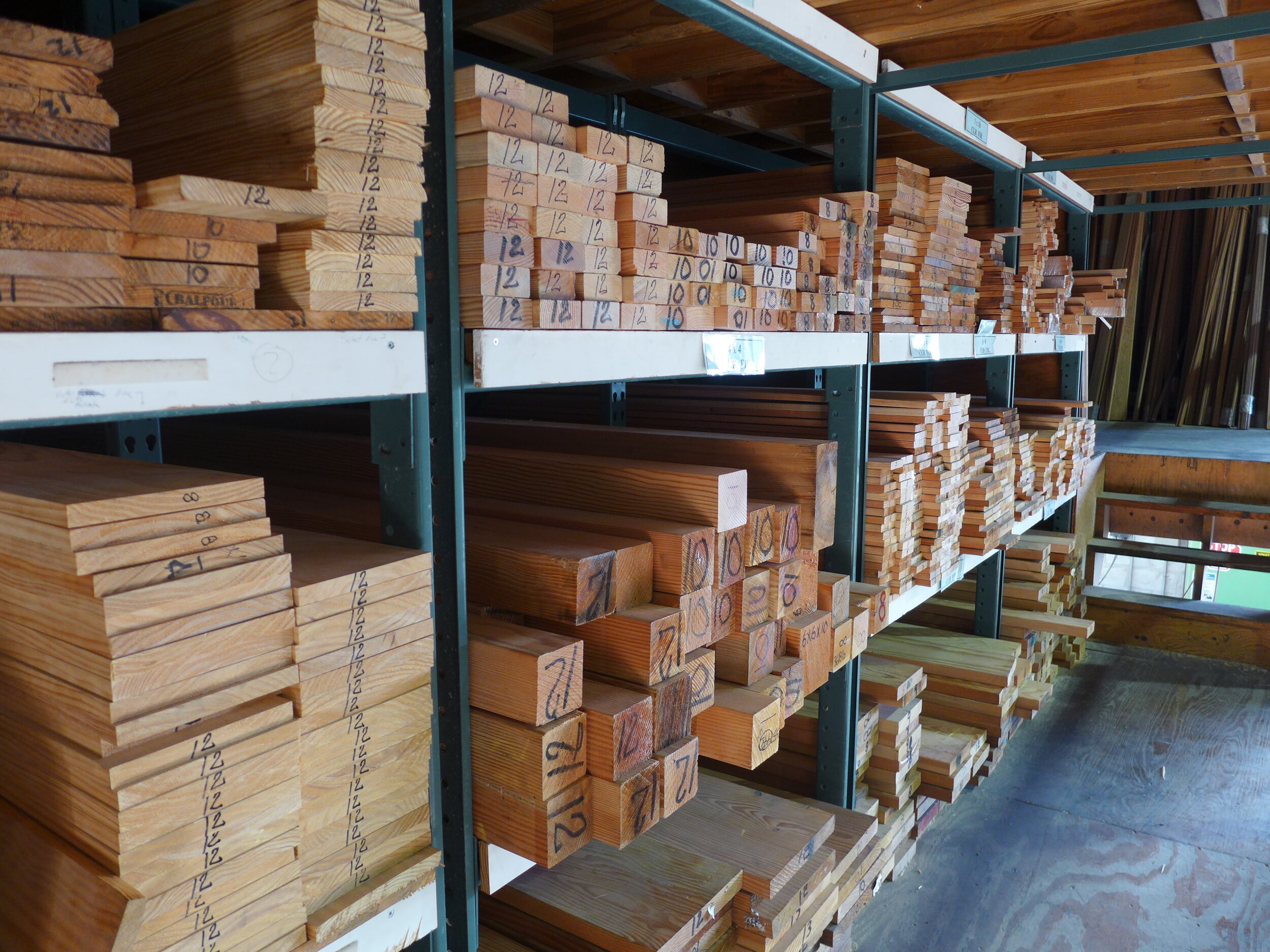
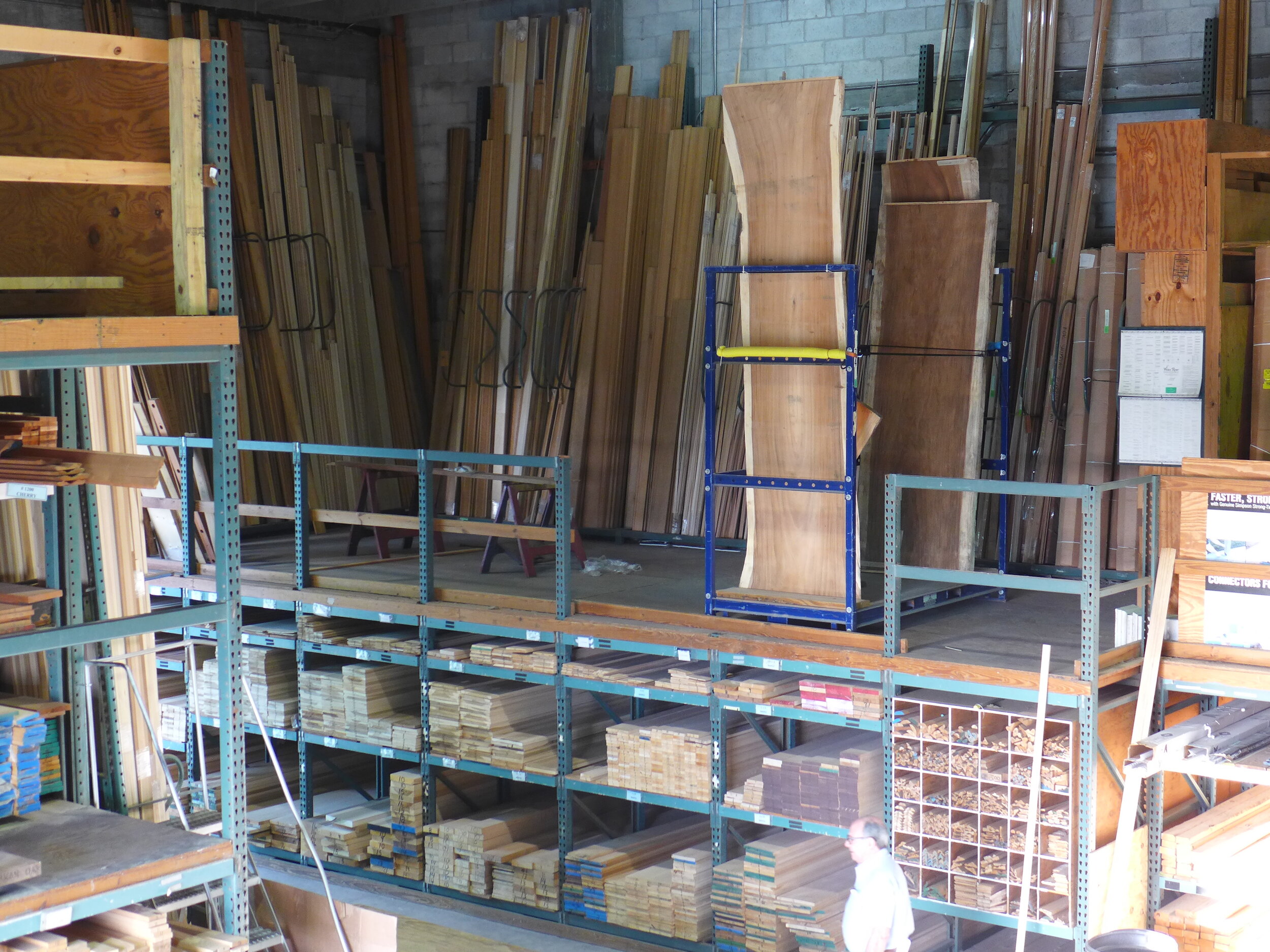
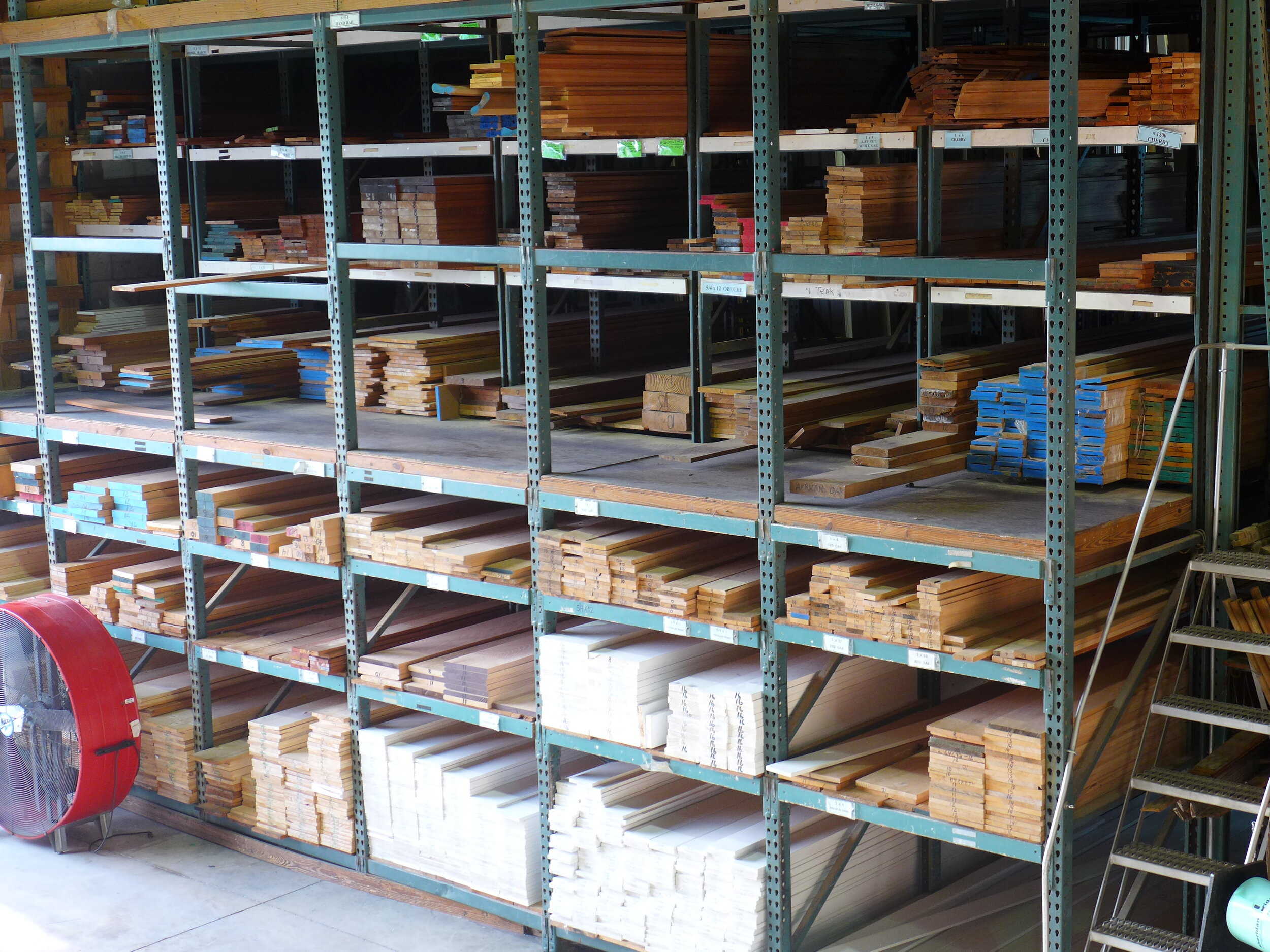

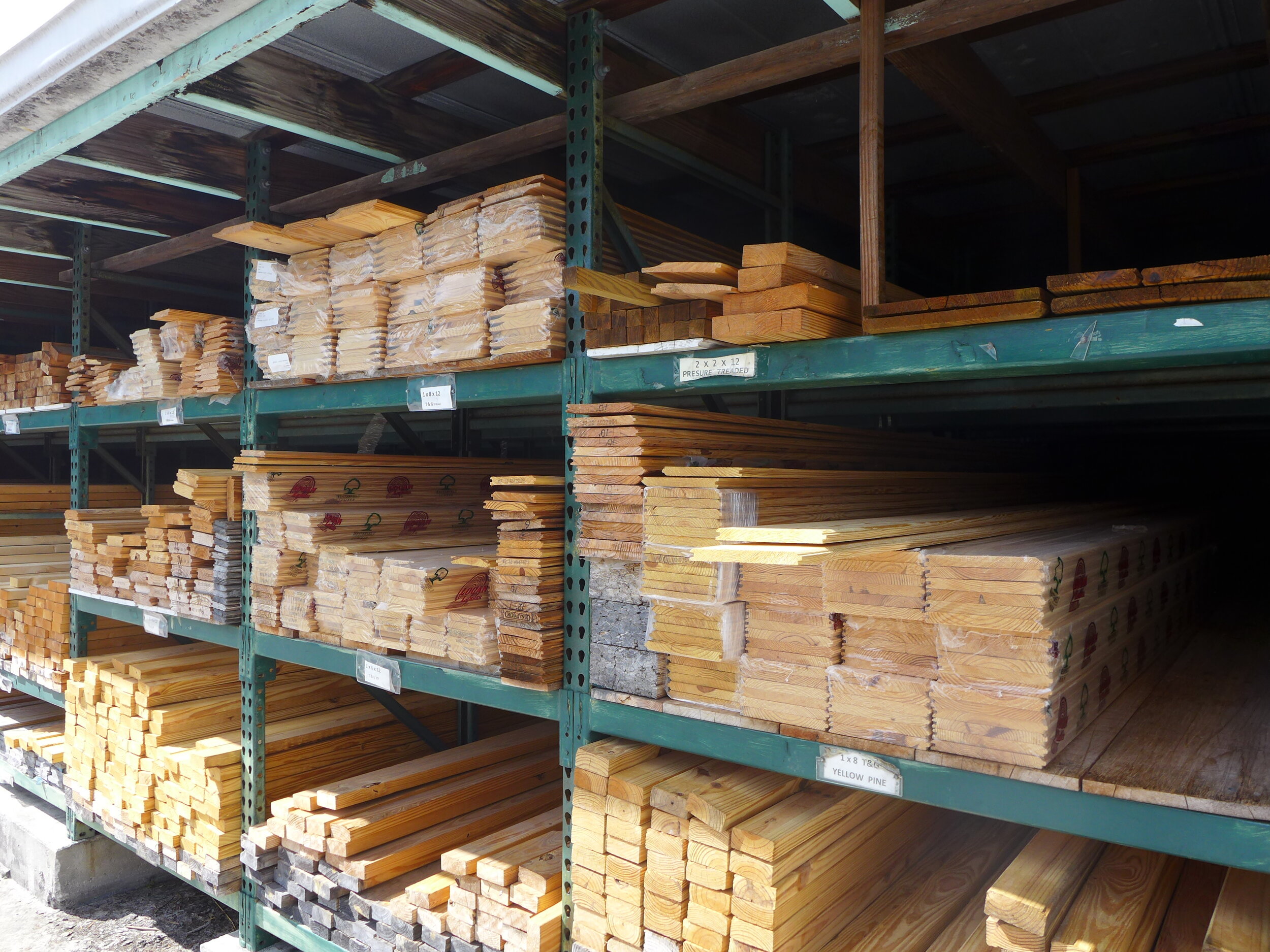
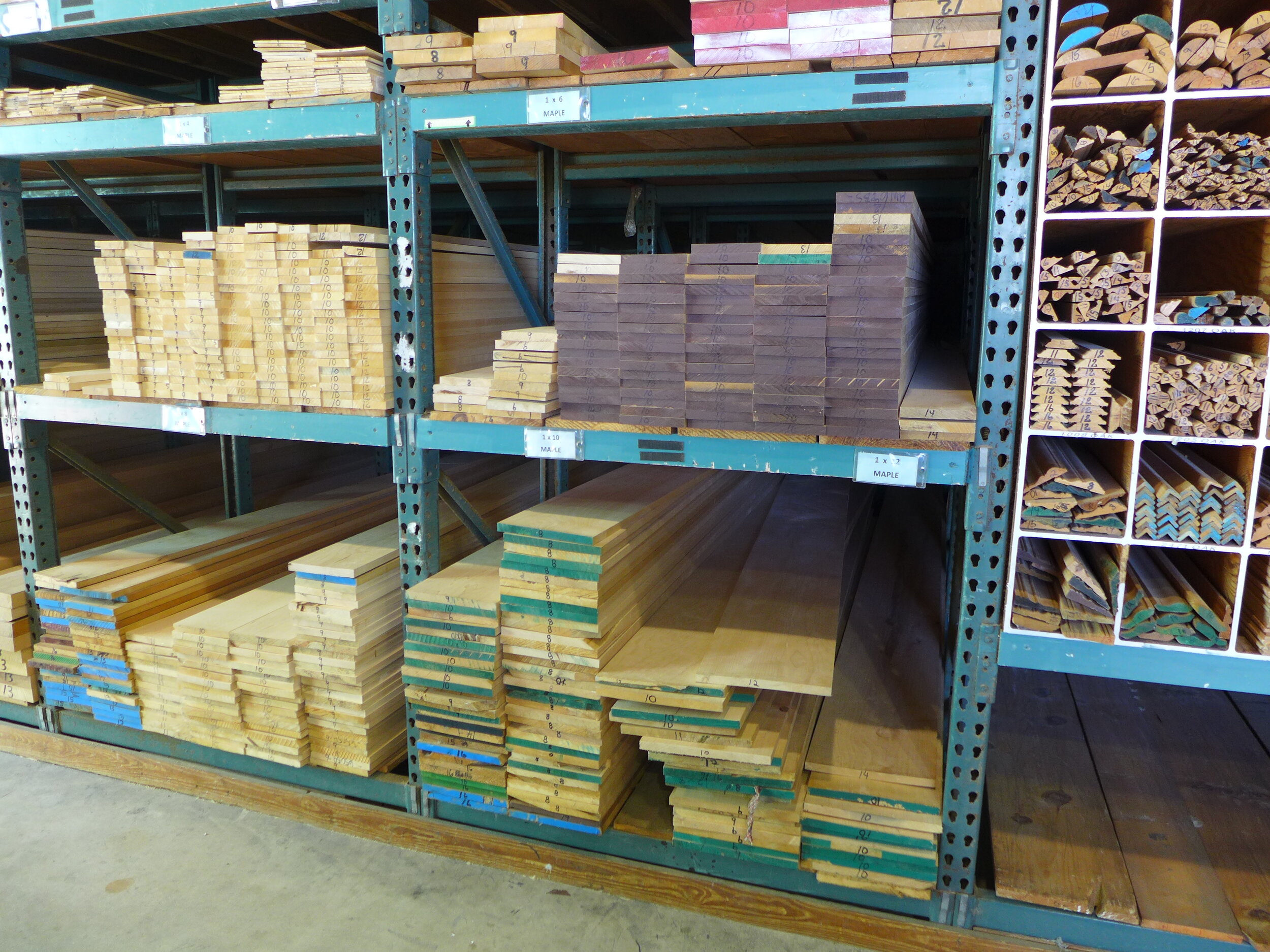
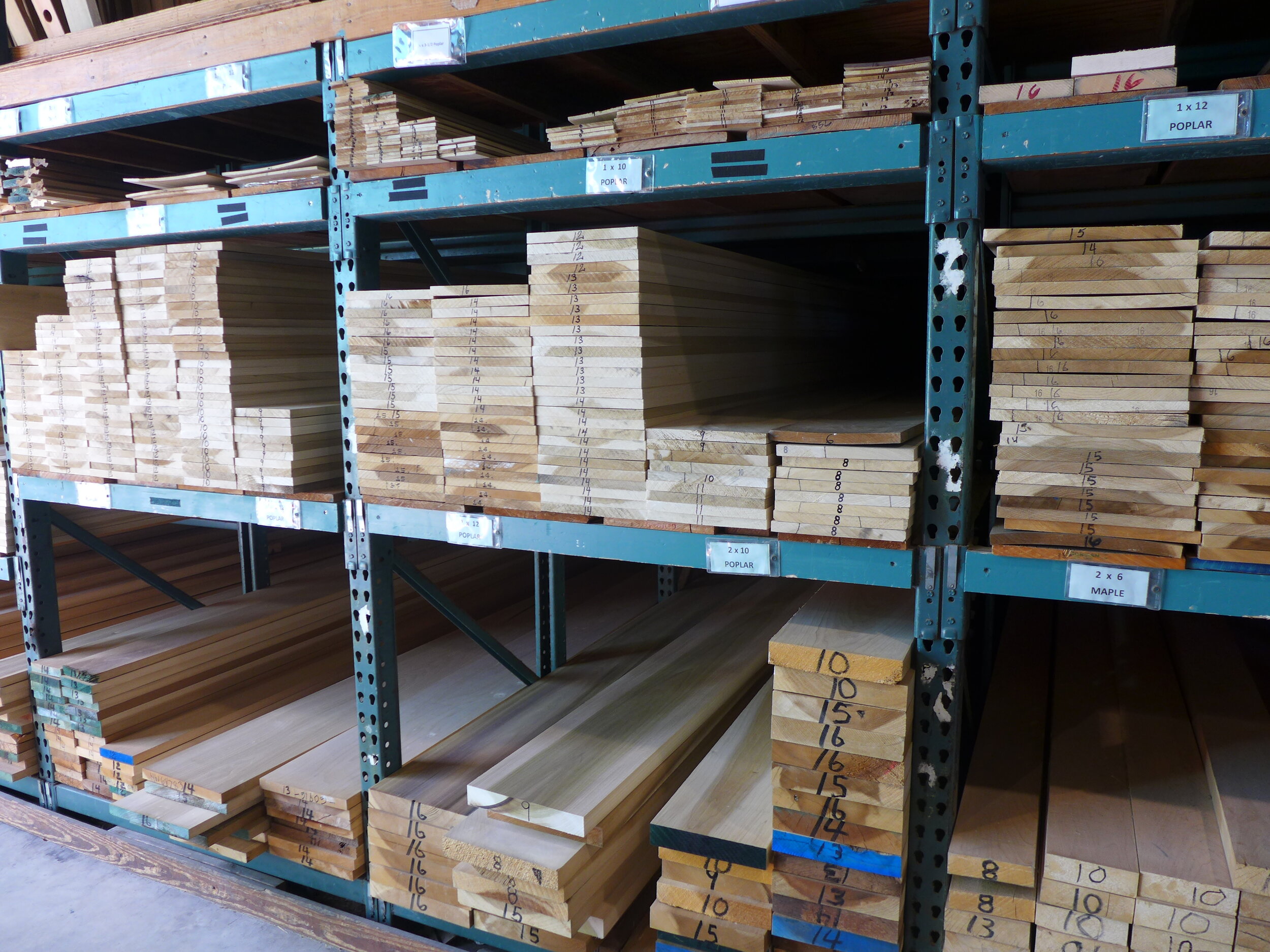
The below is excerpts from the US Department of Agriculture, Forestry Service; General Technical Report FPL-GTR-190. Each of the described species are in stock in a variety of sizes and lengths.
Domestic Species
Poplar
Yellow-poplar (Liri‑ odendron tulipifera) is also known as poplar, tulip-poplar, and tulipwood. Sapwood from yellow-poplar is sometimes called white poplar or whitewood. Poplar grows from Connecticut and New York southward to Florida and westward to Missouri. The greatest commercial production of poplar lumber is in the South and Southeast. Poplar sapwood is white and frequently several centimeters wide. The heartwood is yellowish brown, sometimes streaked with purple, green, black, blue, or red. These colorations do not affect the physical properties of the wood. The wood is generally straight grained and comparatively uniform in texture. Slow-grown wood is moderately light in weight and moderately low in bending strength, moderately soft, and moderately low in shock resistance. The wood has moderately high shrinkage when dried from a green condition, but it is not difficult to dry and is stable after drying. The lumber is used primarily for furniture, interior moulding, siding, cabinets, musical instruments, and engineered wood composites. Yellow-poplar is also made into plywood for paneling, furniture, piano cases, and various other special products.
Maple
Maple lumber is manufactured principally in the Middle Atlantic and Great Lake States, which together account for about two-thirds of production. The heartwood is usually light reddish brown but sometimes considerably darker. The sapwood is commonly white with a slight reddish-brown tinge. It is usually 8 to 12 cm (3 to 5 in.) wide. Hard maple has a fine, uniform texture. It is heavy, strong, stiff, hard, and resistant to shock and has high shrinkage. The grain of sugar maple is generally straight, but birdseye, curly, or fiddleback grain is often selected for furniture or novelty items. Hard maple is used principally for lumber and veneer. A large proportion is manufactured into flooring, furniture, cabinets, cutting boards and blocks, pianos, billiard cues, handles, novelties, bowling alleys, dance and gymnasium floors, spools, and bobbins.
Red Oak
Most red oak comes from the Eastern States. The sapwood is nearly white and roughly 2 to 5 cm (1 to 2 in.) wide. The heartwood is brown with a tinge of red. Quartersawn lumber of the oaks is distinguished by its broad and conspicuous rays. Wood of the red oaks is heavy. Rapidly grown second growth wood is generally harder and tougher than finer textured old-growth wood. The red oaks have fairly high shrinkage upon drying. The red oaks are primarily cut into lumber, railroad crossties, mine timbers, fence posts, veneer, pulpwood, and fuelwood. Ties, mine timbers, and fence posts require preservative treatment for satisfactory service. Red oak lumber is remanufactured into flooring, furniture, general millwork, boxes, pallets and crates, agricultural implements, caskets, wooden ware, and handles. It is also used in railroad cars and boats.
White Oak
White oak lumber comes chiefly from the South, South Atlantic, and Central States, including the southern Appalachian area. The most important western oak species, Oregon white oak (Q. garryana), is a member of this group. The sapwood of the white oaks is nearly white and roughly 2 to 5 cm (1 to 2 in.) wide. The heartwood is generally grayish brown. Heartwood pores are usually plugged with tyloses, which tend to make the wood impenetrable to liquids. Consequently, most white oaks are suitable for tight cooperage, although many heartwood pores of chestnut oak lack tyloses. The wood of white oak is somewhat heavier than the wood of red oak. Its heartwood has good decay resistance. White oaks are usually cut into lumber, railroad crossties, cooperage, mine timbers, fence posts, veneer, fuelwood, and many other products. High-quality white oak is especially sought for tight cooperage. An important use of white oak is for planking and bent parts of ships and boats; heartwood is often specified because of its decay resistance. White oak is also used for furniture, flooring, pallets, agricultural implements, railroad cars, truck floors, furniture, doors, and millwork.
Walnut
Black walnut (Juglans nigra) ranges from Vermont to the Great Plains and southward into Louisiana and Texas. About three-quarters of walnut wood is grown in the Central States.The heartwood of black walnut varies from light to dark brown; the sapwood is nearly white and up to 8 cm (3 in.) wide in open-grown trees. Black walnut is normally straight grained, easily worked with tools, and stable in use. It is heavy, hard, strong, and stiff, and has good resistance to shock. Black walnut is well suited for natural finishes. Because of its good properties and interesting grain pattern, black walnut is much valued for furniture, architectural woodwork, and decorative panels. Other important uses are gunstocks, cabinets, and interior woodwork.
Fir
Douglas-fir (Pseu‑ dotsuga menziesii) is also known locally as red-fir, Douglas-spruce, and yellow-fir. Its range extends from the Rocky Mountains to the Pacific Coast and from Mexico to central British Columbia. Sapwood of Douglas-fir is narrow in old-growth trees but may be as much as 7 cm (3 in.) wide in second-growth trees of commercial size. Young trees of moderate to rapid growth have reddish heartwood and are called red-fir. Very narrow-ringed heartwood of old-growth trees may be yellowish brown and is known on the market as yellow-fir. The wood of Douglas-fir varies widely in weight and strength. Douglas-fir is used mostly for building and construction purposes in the form of lumber, marine fendering, piles, plywood, and engineered wood composites. Considerable quantities are used for railroad crossties, cooperage stock, mine timbers, poles, and fencing. Douglas-fir lumber is used in the manufacture of sashes, doors, laminated beams, general millwork. Small amounts are used for flooring, furniture, ship and boat construction, and tanks.
Cypress
Bald cypress or cypress (Taxodium distichum) is also known as southern cypress, red-cypress, yellow-cypress, and white-cypress. Commercially, the terms tidewater red-cypress, gulf cypress, red-cypress (coast type), and yellow-cypress (inland type) are frequently used. About half of the cypress lumber comes from the Southern States and about a fourth from the South Atlantic States. Old-growth bald cypress is difficult to find, but second-growth wood is available. Sapwood of baldcypress is narrow and nearly white. The color of heartwood varies widely, ranging from light yellowish brown to dark brownish red, brown, or chocolate. The wood is moderately heavy, moderately strong, and moderately hard. The heartwood of old-growth bald cypress is one of the most decay resistant of U.S. species, but second-growth wood is only moderately resistant to decay. Shrinkage is moderately low but somewhat higher than that of the cedars and lower than that of Southern Pine. The wood of certain bald cypress trees frequently contains pockets or localized areas that have been attacked by a fungus. Such wood is known as pecky cypress. The decay caused by this fungus is stopped when the wood is cut into lumber and dried. Pecky cypress is therefore durable and useful where water tightness is unnecessary, appearance is not important, or a novel effect is desired. When old-growth wood was available, baldcypress was used principally for building construction, especially where resistance to decay was required. It was also used for caskets, sashes, doors, blinds, tanks, vats, ship and boat building, and cooling towers. Second-growth wood is used for siding and millwork, including interior woodwork and paneling. Pecky cypress is used for paneling in restaurants, stores, and other buildings.
Cedar
Incense-cedar (Caloce‑ drus decurrens) grows in California, southwestern Oregon, and extreme western Nevada. Most incense-cedar lumber comes from the northern half of California. Sapwood of incense-cedar is white or cream colored, and heartwood is light brown, often tinged with red. The wood has a fine, uniform texture and a spicy odor. Incense-cedar is light in weight, moderately low in strength, soft, low in shock resistance, and low in stiffness. It has low shrinkage and is easy to dry, with little checking or warping. Incense-cedar is used principally for lumber and fence posts. Nearly all the high-grade lumber is used for pencils and venetian blinds; some is used for chests and toys.
Western Red Cedar
Western red cedar (Thuja plicata) grows in the Pacific Northwest and along the Pacific Coast to Alaska. It is also called canoe‑cedar, giant arborvitae, shinglewood, and Pacific red cedar. Western red cedar lumber is produced principally in Washington, followed by Oregon, Idaho, and Montana. The heartwood of western red cedar is reddish or pinkish brown to dull brown, and the sapwood is nearly white. The sapwood is narrow, often not more than 3 cm (1 in.) wide. The wood is generally straight grained and has a uniform but rather coarse texture. It has very low shrinkage. This species is lightweight, moderately soft, low in strength when used as a beam or post, and low in shock resistance. The heartwood is very resistant to decay. Western red cedar is used principally for shingles, lumber, poles, posts, and piles. Cedar is used for exterior siding, decking, interior woodwork, ship and boat building, boxes and crates, sashes, and doors.
Exotic Species
Ipe
Ipe, the common name for the lapacho group of the genus Tabebuia, consists of about 20 species of trees and occurs in practically every Latin America country except Chile. Other commonly used names are guayacan and lapacho. Sapwood is relatively wide, yellowish gray or gray–brown, and sharply differentiated from heartwood, which is light to dark olive brown. The texture is fine to medium. The grain is straight to very irregular and often narrowly interlocked. The wood is very heavy and averages about 1,025 kg m–3 (64 lb ft–3) at 12% moisture content. Thoroughly air-dried heartwood specimens generally sink in water. Because of its high density and hardness, ipe is moderately difficult to machine, but glassy smooth surfaces can be produced. Ipe is very strong; in the air-dried condition, it is comparable with greenheart (Chlorocardium rodiei). Hardness is two to three times that of white oak (Quercus alba) or keruing (Dipterocarpus). The wood is highly resistant to decay and insects, including both subterranean and dry-wood termites, but susceptible to marine borer attack. The heartwood is impermeable, but the sapwood can be readily treated with preservatives. Ipe is used almost exclusively for heavy-duty and durable construction. Because of its hardness and good dimensional stability, it is particularly well suited for heavy-duty flooring in trucks and boxcars. It is also used for decks, railroad crossties, turnery, tool handles, decorative veneers, and some specialty items in textile mills.
Iroko
Iroko consists of two species (Milicia excelsa and M. regia). Milicia excelsa grows across the entire width of tropical Africa from the Ivory Coast southward to Angola and eastward to East Africa. M. regia, however, is limited to extreme West Africa from Gambia to Ghana; it is less resistant to drought than is M. excelsa. The heartwood varies from a pale yellowish brown to dark chocolate brown with light markings occurring most conspicuously on flat-sawn surfaces; the sapwood is yellowish white. The texture is medium to coarse, and the grain is typically interlocked. Iroko can be worked easily with hand or machine tools but with some tearing of interlocked grain. Occasional deposits of calcium carbonate severely damage cutting edges. The wood dries rapidly with little or no degradation. The strength is similar to that of red maple (Acer rubrum), and the weight is about 688 kg m–3 (43 lb ft–3) at 12% moisture content. The heartwood is very resistant to decay fungi and resistant to termite and marine borer attack. Because of its color and durability, iroko has been suggested as a substitute for teak (Tectona grandis). Its durability makes it suitable for boat building, piles, other marine work, and railroad crossties. Other uses include joinery, flooring, furniture, veneer, and cabinetwork.
Mahogany
American True, American, or Honduras mahogany (Swiete‑ nia macrophylla) ranges from southern Mexico through Central America into South America as far south as Bolivia. Plantations have been established within its natural range and elsewhere throughout the tropics. The heartwood varies from pale pink or salmon colored to dark reddish brown. The grain is generally straighter than that of African mahogany (Khaya ivorensis); however, a wide variety of grain patterns are obtained from American mahogany. The texture is rather fine to coarse. American mahogany is easily air or kiln dried without appreciable warp or checks, and it has excellent dimensional stability. It is rated as durable in resistance to decay fungi and moderately resistant to dry-wood termites. Both heartwood and sapwood are resistant to treatment with preservatives. The wood is very easy to work with hand and machine tools, and it slices and rotary cuts into fine veneer without difficulty. It also is easy to finish and takes excellent polish. The air-dried strength of American mahogany is similar to that of American elm (Ulmus americana). Density of air dried wood varies from 480 to 833 kg m–3 (30 to 52 lb ft–3). The principal uses for mahogany are fine furniture and cabinets, interior woodwork, pattern woodwork, boat construction, fancy veneers, musical instruments, precision instruments, paneling, turnery, carving, and many other uses that call for an attractive and dimensionally stable wood.